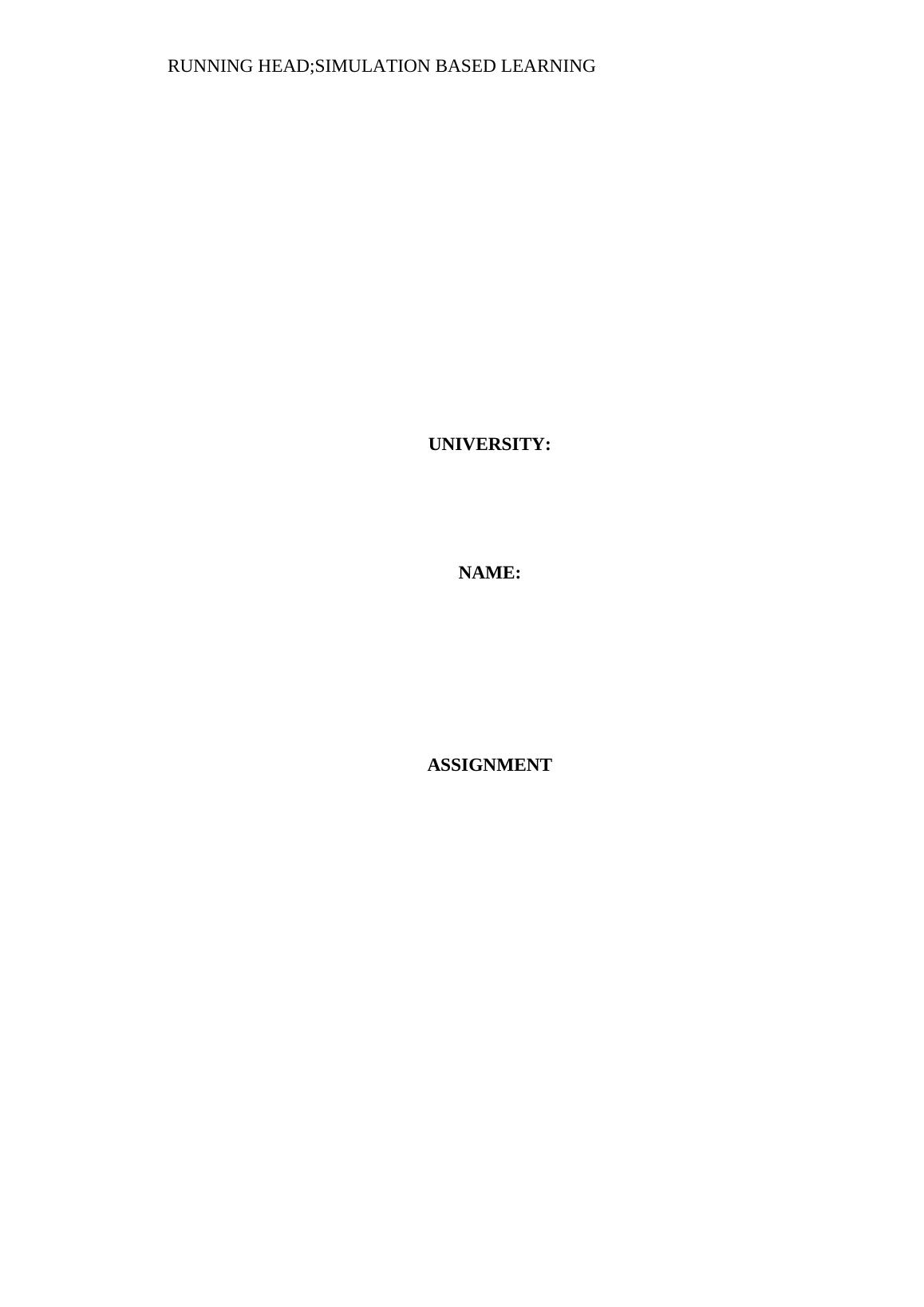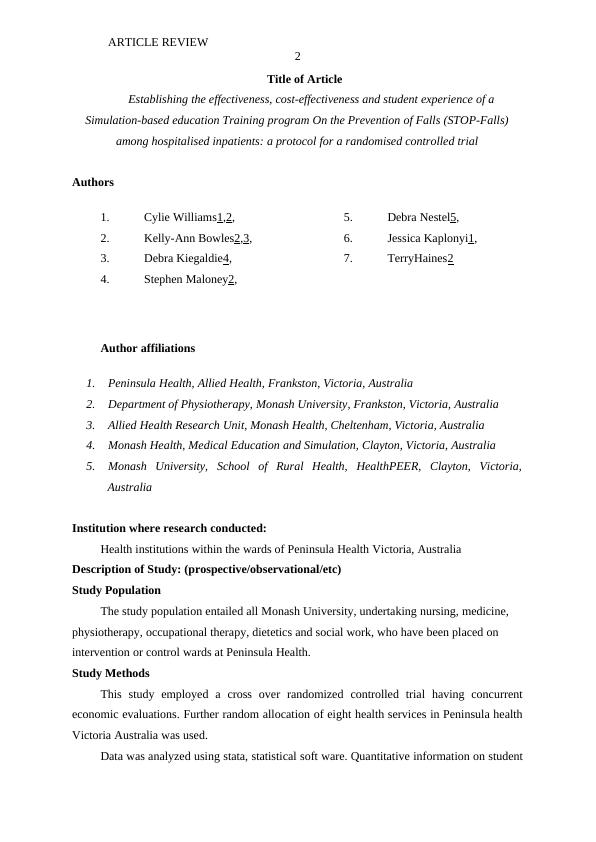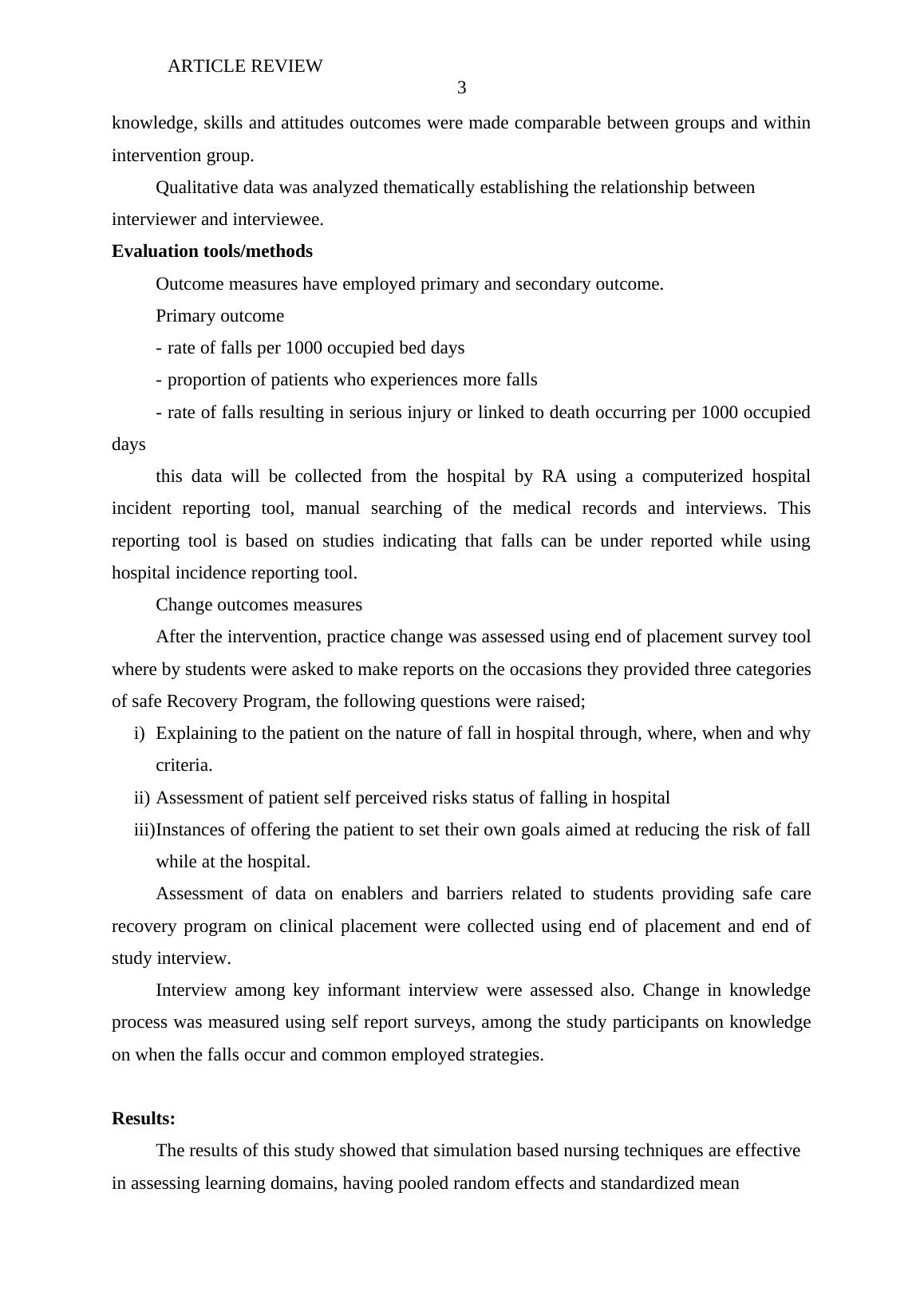(PDF) Simulation-Based Learning in Higher Education
Added on 2021-04-21
8 Pages2683 Words55 Views
RUNNING HEAD;SIMULATION BASED LEARNINGUNIVERSITY:NAME:ASSIGNMENT

ARTICLE REVIEW 2Title of ArticleEstablishing the effectiveness, cost-effectiveness and student experience of aSimulation-based education Training program On the Prevention of Falls (STOP-Falls)among hospitalised inpatients: a protocol for a randomised controlled trialAuthors 1.Cylie Williams1,2, 2.Kelly-Ann Bowles2,3, 3.Debra Kiegaldie4, 4.Stephen Maloney2, 5.Debra Nestel5, 6.Jessica Kaplonyi1, 7.TerryHaines2Author affiliations1.Peninsula Health, Allied Health, Frankston, Victoria, Australia2.Department of Physiotherapy, Monash University, Frankston, Victoria, Australia3.Allied Health Research Unit, Monash Health, Cheltenham, Victoria, Australia4.Monash Health, Medical Education and Simulation, Clayton, Victoria, Australia5.Monash University, School of Rural Health, HealthPEER, Clayton, Victoria,AustraliaInstitution where research conducted: Health institutions within the wards of Peninsula Health Victoria, AustraliaDescription of Study: (prospective/observational/etc) Study PopulationThe study population entailed all Monash University, undertaking nursing, medicine, physiotherapy, occupational therapy, dietetics and social work, who have been placed on intervention or control wards at Peninsula Health.Study Methods This study employed a cross over randomized controlled trial having concurrenteconomic evaluations. Further random allocation of eight health services in Peninsula healthVictoria Australia was used.Data was analyzed using stata, statistical soft ware. Quantitative information on student

ARTICLE REVIEW 3knowledge, skills and attitudes outcomes were made comparable between groups and withinintervention group.Qualitative data was analyzed thematically establishing the relationship between interviewer and interviewee.Evaluation tools/methods Outcome measures have employed primary and secondary outcome.Primary outcome-rate of falls per 1000 occupied bed days-proportion of patients who experiences more falls-rate of falls resulting in serious injury or linked to death occurring per 1000 occupieddaysthis data will be collected from the hospital by RA using a computerized hospitalincident reporting tool, manual searching of the medical records and interviews. Thisreporting tool is based on studies indicating that falls can be under reported while usinghospital incidence reporting tool.Change outcomes measuresAfter the intervention, practice change was assessed using end of placement survey toolwhere by students were asked to make reports on the occasions they provided three categoriesof safe Recovery Program, the following questions were raised;i)Explaining to the patient on the nature of fall in hospital through, where, when and whycriteria.ii)Assessment of patient self perceived risks status of falling in hospitaliii)Instances of offering the patient to set their own goals aimed at reducing the risk of fallwhile at the hospital. Assessment of data on enablers and barriers related to students providing safe carerecovery program on clinical placement were collected using end of placement and end ofstudy interview.Interview among key informant interview were assessed also. Change in knowledgeprocess was measured using self report surveys, among the study participants on knowledgeon when the falls occur and common employed strategies. Results: The results of this study showed that simulation based nursing techniques are effective in assessing learning domains, having pooled random effects and standardized mean

End of preview
Want to access all the pages? Upload your documents or become a member.
Related Documents
Using Transprofessional Care in the Emergency Department to Reduce Patient Admissionslg...
|7
|6897
|348
Clinical Interventions in Aginglg...
|14
|11866
|30
Preoperative Physiotherapy for the Prevention of Respiratory Complications after Upper Abdominal Surgerylg...
|9
|2079
|124
Prevention of Fall: Effective Interventions for Older Adults in a Health Care Settinglg...
|44
|8437
|20
